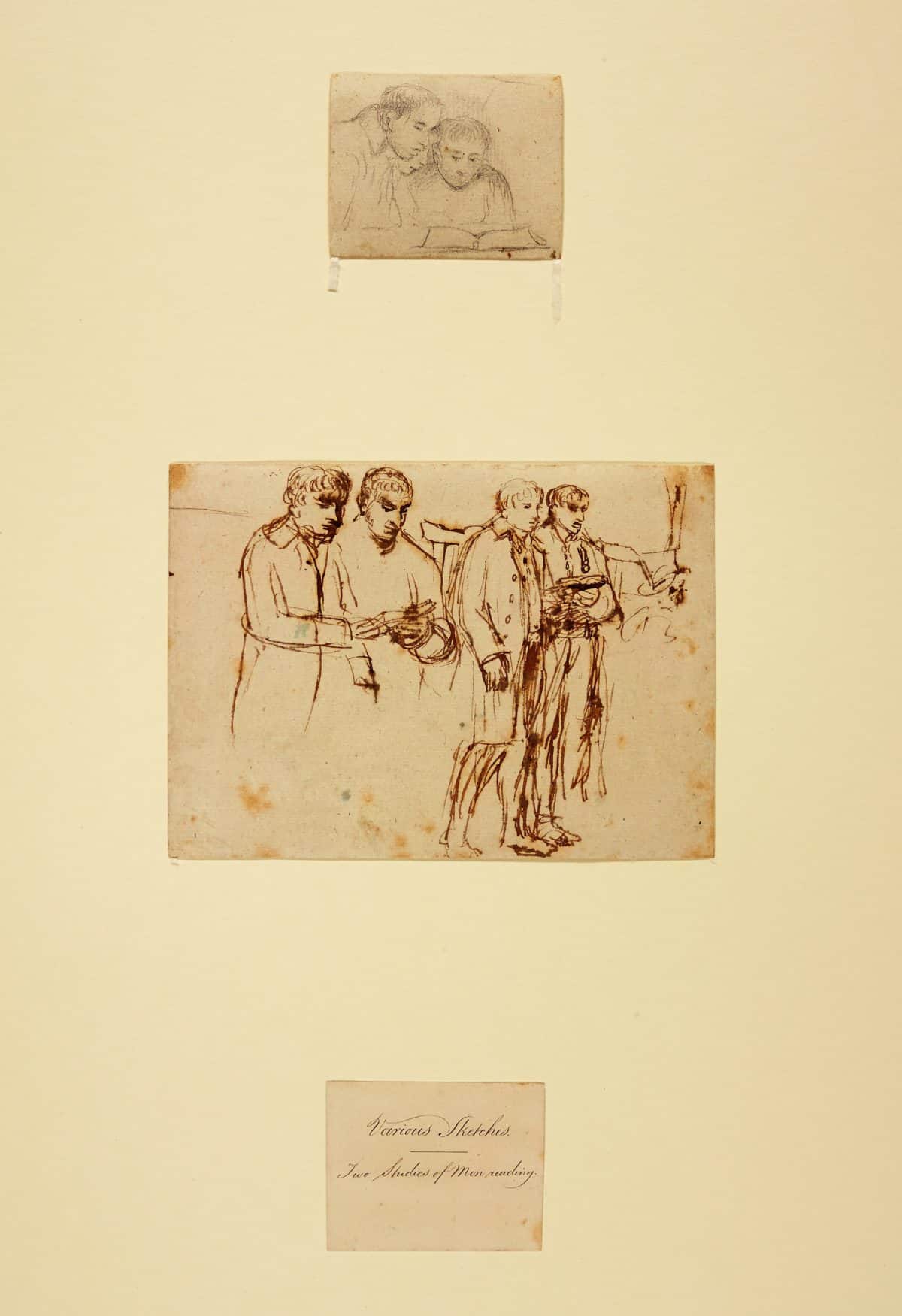Sir David Wilkie RA (1785-1841) Studies of men reading Pen and brown ink on paper, 138 x 192 mm; pencil on paper, 65 x 81mm Folkestone Museum (Master Collection) F.3644.68 These men are reading. The standing men are sharing books, holding one between two. They may be prayer books or hymn books; one of the men looks to have an open mouth and may be singing. In the drawing of three heads the men are looking down at a large book. They are probably retired soldiers at the Chelsea Hospital in London. One appears to have a medal pinned to his chest. The Scottish artist, David Wilkie, lived near Chelsea Hospital from December 1810 to July 1811. These drawings are clearly from life and likely date from that time. One of the studies is drawn in pen and ink, the other in pencil. Wilkie’s studies of old soldiers at the Chelsea Hospital gave him the idea for a painting celebrating victory at the Battle of Waterloo in 1815. He created his most famous painting and masterpiece, Chelsea Pensioners reading the Waterloo Despatch in 1822. It is now at the former home of the victor at Waterloo, the Duke of Wellington, at Apsley House, London. The painting shows retired soldiers or ‘pensioners’ at Chelsea Hospital reading the London Gazette, which was the first to print news of victory at Waterloo. Major Henry Percy, aide de camp to the Duke of Wellington, carried the Duke’s personal handwritten account, together with two captured French imperial eagles, from the battlefield at Waterloo, just south of Brussels in Belgium, to London. An Anglo-Dutch army commanded by the Duke, alongside the Prussian army led by Field Marshal von Blucher, had defeated the French imperial army of Napoleon Bonaparte at Waterloo. Percy travelled straight from the battle on Sunday 18 June 1815 by post chaise to Ostend, where he joined HMS Peruvian. Landing at Broadstairs, Kent, Percy took another post chaise to London, arriving on 21 June. He delivered the Duke’s despatch to the Prime Minister in Grosvenor Square, then went to deliver the news to the Prince Regent in St James’s Square. He presented the captured French eagles to the Prince Regent. There are modern plaques commemorating receipt of the news in both places. Wilkie painted a number of history pictures as well as images of everyday life. They are all packed with detail. He travelled abroad and in 1841 became ill with cholera, a virus for which there was no cure. He died and was buried at sea. His artist friends back in England were devastated. J. M. W. Turner painted Peace, Burial at Sea (Tate Gallery) to commemorate Wilkie.

